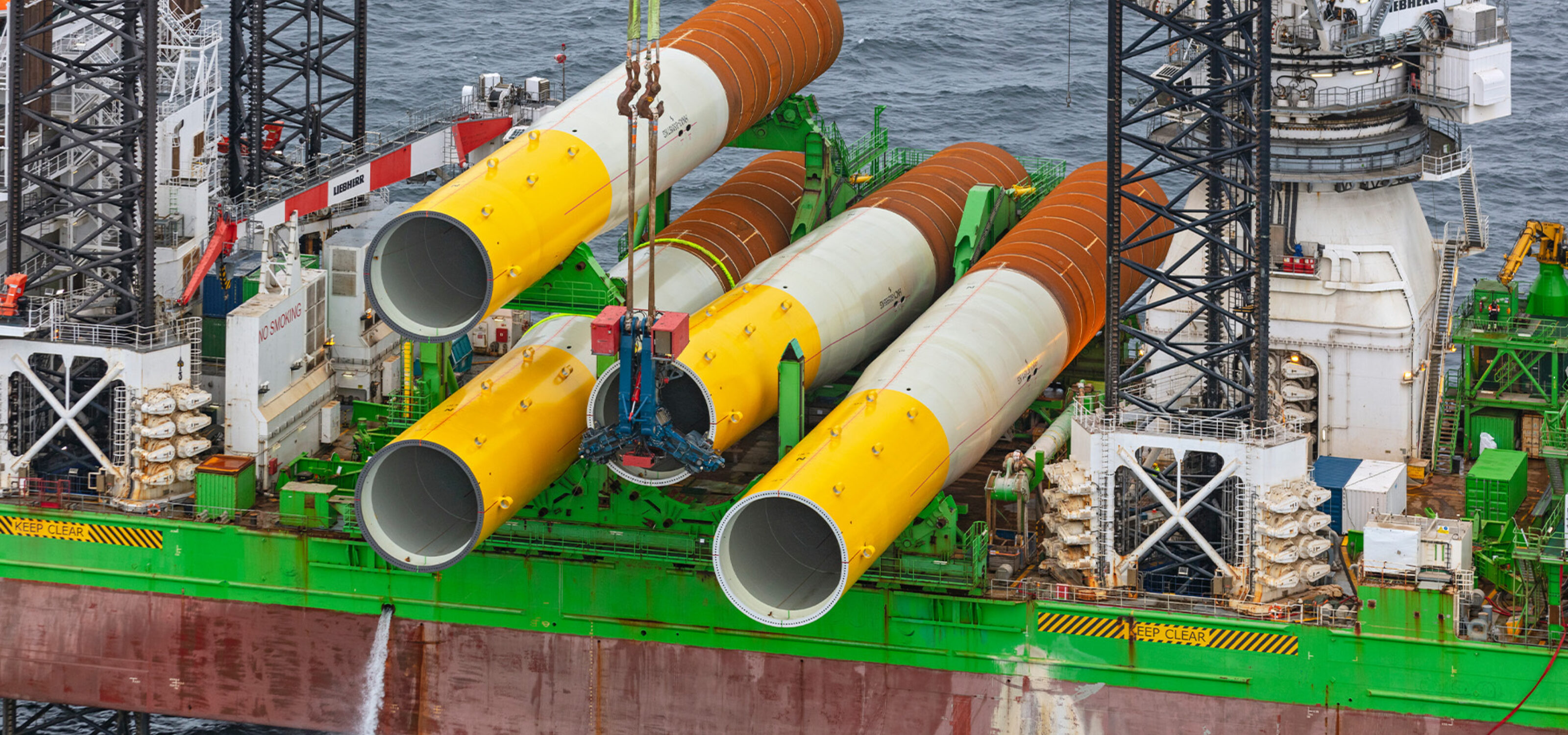Wybren: To keep it simple; we are involved in all the fabrication and installation works, except for the turbine installation. And in this particular phase of the project, we are focusing on all activities in regards of installing monopiles at sea. Not only are we making sure that all the foundations are installed on time, but also that all items meet the strict standards and criteria in regards of build quality and design. We are looking at the monopiles, as well as all secondary steel. These consist of three items per monopile; the external or outside working platform, the internal platform and the boat landing.
What makes your jobs interesting?
Ward: Before my work at CrossWind, I’ve studied the melting of polar ice caps. And in that sense, I feel that it’s really great to work on the energy transition, on a project of this scale. And besides that, it is also the complexity of the design that I like. Building these gigantic parts and getting them together at the right time. Some of our major components are enormous. Seeing the monopiles being rolled around on special carrier vehicles at SIF or seeing all these parts being loaded out at the Maasvlakte harbour is spectacular. We are not only working in a great team, but also working together with nice partners and companies. This really defines a big part of our success, I believe.
Wybren: What I like a lot about my job is that our industry is constantly evolving. We work together with experienced partners and learning from each other and sharing knowledge is very inspiring. In regard to Ward, my role is more to keep an overview of the total process. Ward is more into all the details of the project, but we work closely together, and we use each other often to reflect on issues when we encounter them.
You’ve entered offshore installation phase last October. What are your biggest challenges?
Wybren: Well, the international economic situation at this moment is challenging. We had to get the steel for our monopiles from another location than we had planned, for instance. Also getting enough skilled workers, like specialised welders, can be tedious.
Ward: Another challenge is in the criteria of the design. Every part needs to fit exactly together. The secondary steel, produced by Marketex, will be installed at sea. So, there is no room for error. The criteria for the design of these large structures are at some places only 2 millimeters max. Imagine that, when we lay down or lift some of these heavy items, it is possible that they deform a little due to their own weight. We must make sure that those deformations stay well within our margins. To ensure that this is the case, Van Oord, our installation partner, did a test lift on a mock-up onshore to see what happened while handling and moving some of those large parts. With the findings from this test, we were able to make some adjustments to guarantee a safe and successful installation offshore.
What can you tell us about the design of the monopiles?
Ward: Well, what is nice to mention is that the extended monopile design eliminates the need for a transition piece, which reduces the installation time offshore. It also means that the sea cable, that is entering the foundation, needs to be temporarily rolled up inside the foundation during construction. At a later phase we can pick up the cable to pull it into the switchgear which is in the tower of the wind turbine. The challenging part is that we need to stay under the top flange of the monopile with the entire rolled up cable, while we only have a space in the platform of 2,5 meters deep. And there we need to store 18 meters of sea cable. During that time there still needs to be enough space left for people to work, and in an unforeseen situation people can be evacuated when needed. Later, when the turbine is installed, the cable needs to be split into three separate parts and the fiber optics cable. These will then be connected to the switchgear.
Wybren adds: We have a nature inclusive design. This has been a part of our proposal in the tender phase of HKN. At the seabed around the foundation we install calcareous material, a sort of marble-like open structure for sea life to settle in and around. We’ve done so on 42 of the 70 scour protections.
How is the collaboration with your partners and contractors going?
Wybren: We have a very open culture. That means that each team member at CrossWind has a counterpart at our partner and they can contact one another if there are any questions, or something needs to be solved quickly. When there is a difference in insight, we do not stop our preparations and run into delays, which sometimes happens in other industries. We chose to move on, together, while we resolve any issues we might encounter.
And from here on?
Ward: Well, we are in a rougher weather season in the coming months. So, we need to plan for this accordingly to do our operations at sea safely and in line with our planning. And in this phase of the construction there is more happening at the same time, while our work before was more linear. That makes our work even more exciting!





